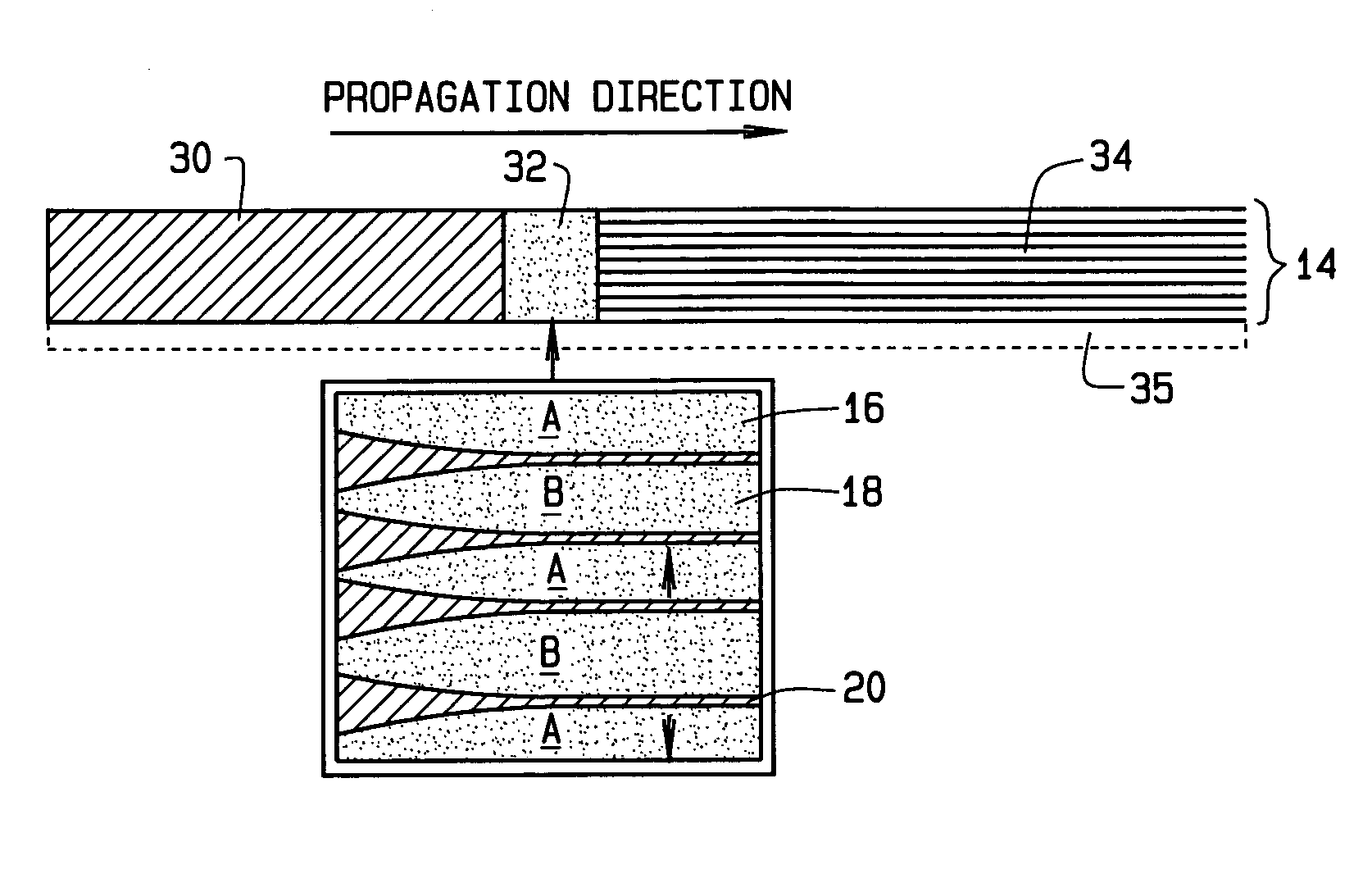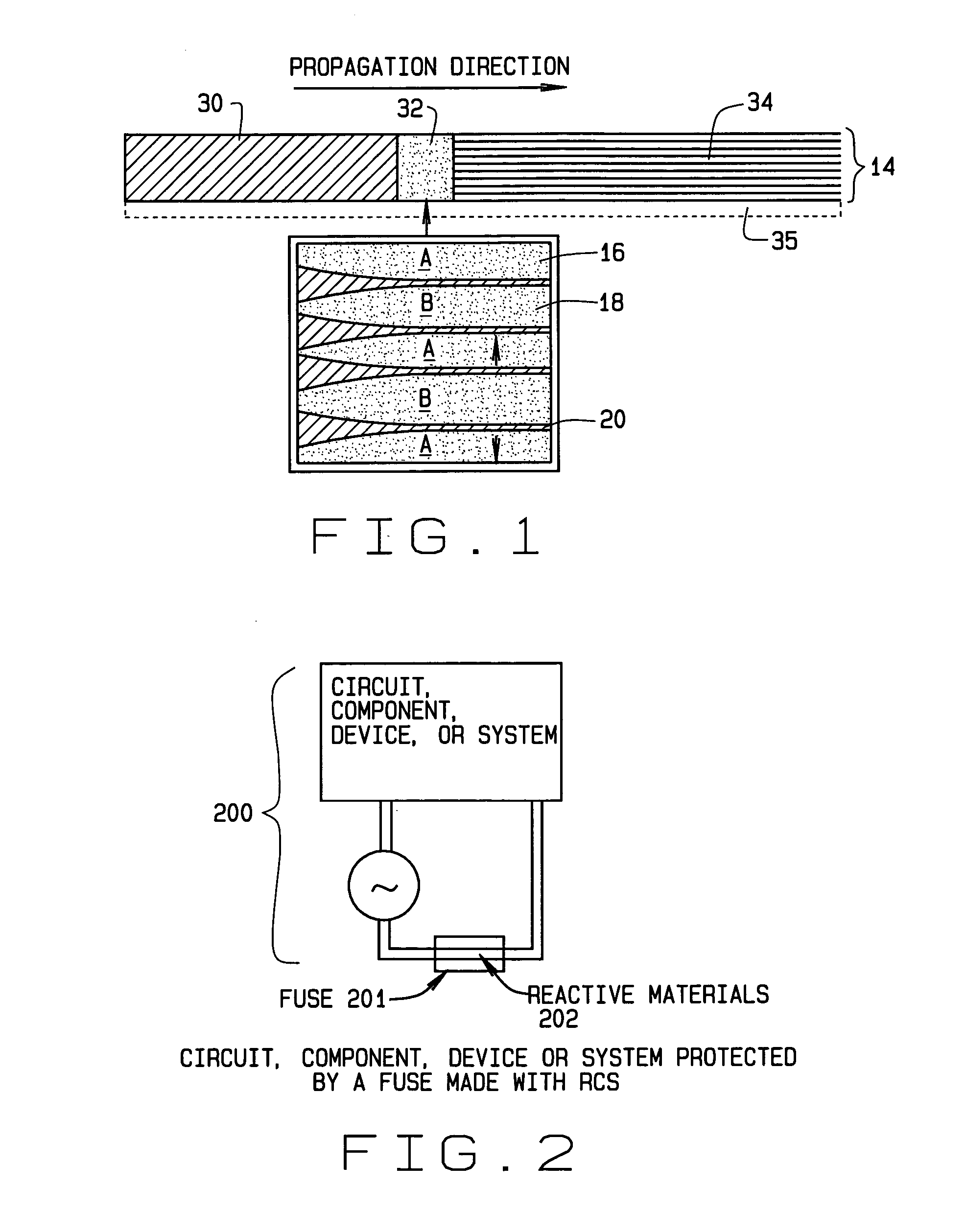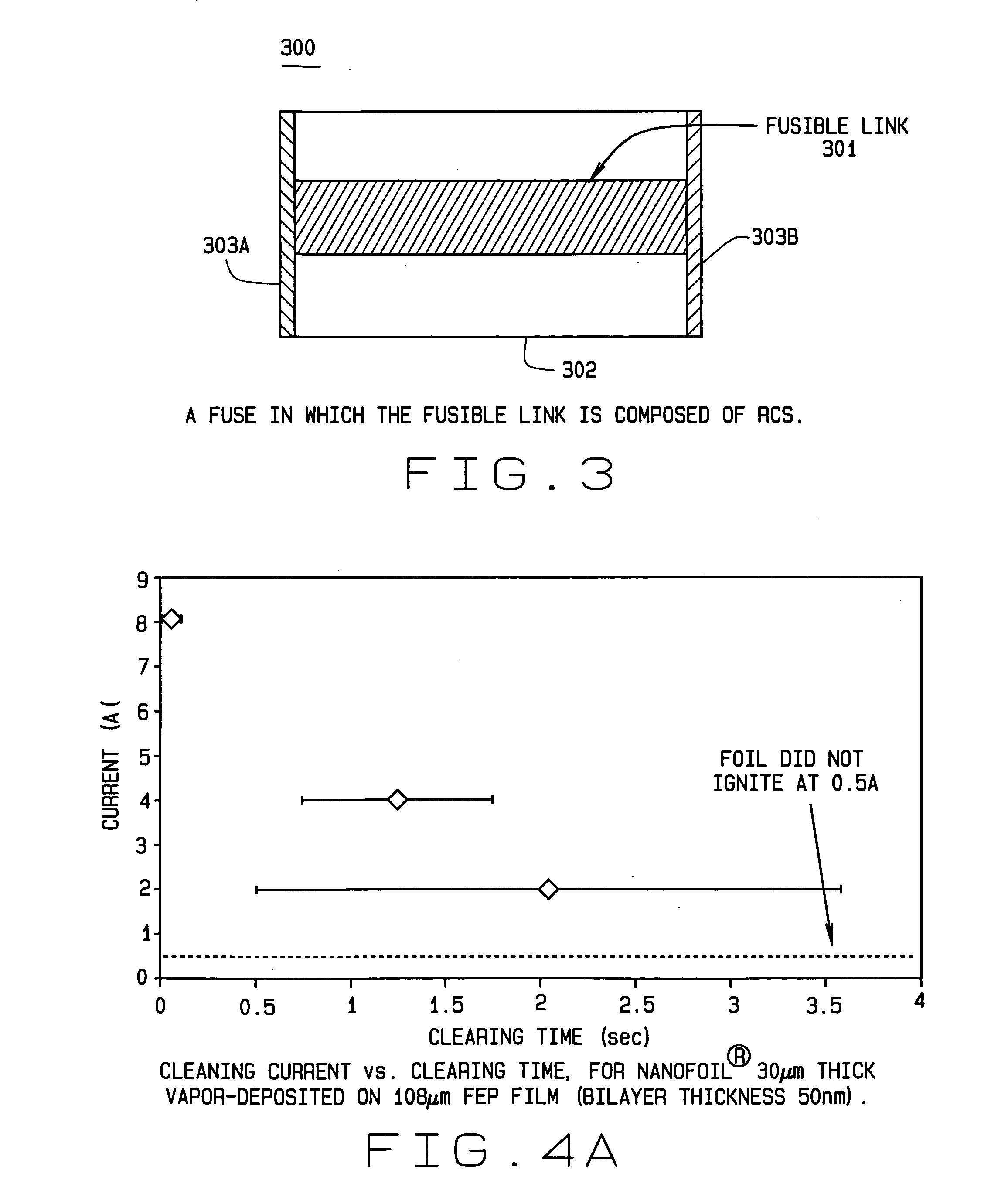Fuse applications of reactive composite structures
- Summary
- Abstract
- Description
- Claims
- Application Information
AI Technical Summary
Benefits of technology
Problems solved by technology
Method used
Image
Examples
Embodiment Construction
[0029] This description is divided into three parts. Part I describes the nature of reactive composite structures and ways of making them. Part II provides a variety of illustrative fuse applications, and Part III describes beneficial features of reactive composite structures and methods for tailoring those features for particular applications.
I. The Nature of Reactive Composite Structures and Ways of Making Them
[0030] The external geometries of reactive composite structures can be in any one of a variety of forms including composite foils, composite wires, composite rods and composite bulk form bodies. Referring to the drawings, FIG. 1 illustrates a reactive composite foil 14 composed of alternating phases or layers 16 and 18 of materials A and B, respectively, that can exothermically react. These alternating layers 16 and 18 can be any materials amenable to mixing of neighboring atoms (or having changes in chemical bonding) in response to a stimulus. The materials A / B can, for ...
PUM
| Property | Measurement | Unit |
|---|---|---|
| Electrical conductivity | aaaaa | aaaaa |
| Flow rate | aaaaa | aaaaa |
| Color | aaaaa | aaaaa |
Abstract
Description
Claims
Application Information
 Login to View More
Login to View More - R&D
- Intellectual Property
- Life Sciences
- Materials
- Tech Scout
- Unparalleled Data Quality
- Higher Quality Content
- 60% Fewer Hallucinations
Browse by: Latest US Patents, China's latest patents, Technical Efficacy Thesaurus, Application Domain, Technology Topic, Popular Technical Reports.
© 2025 PatSnap. All rights reserved.Legal|Privacy policy|Modern Slavery Act Transparency Statement|Sitemap|About US| Contact US: help@patsnap.com



